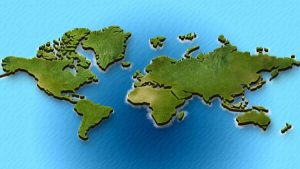Nearly 20 percent of Earth’s seafloor is now mapped
In a decisive leap, researchers have now mapped roughly one fifth of the world’s ocean floor. When an initiative to map the entire seafloor by 2030 took off in 2017, just 6 percent had been mapped to modern standards.
 The project, called Seabed 2030, is a collaboration between the Japan-based Nippon foundation and the intergovernmental organization the General Bathymetric Chart of the Ocean (GEBCO). The endeavor will help scientists better understand how tsunamis form and how much we can expect sea levels to rise as a result of climate change. The complete map could also aid industries looking to exploit oil, gas, and minerals in the deep sea. And the data is important for telecom companies laying down undersea cables from coast to coast. The maps and data collected so far are available to the public.
The project, called Seabed 2030, is a collaboration between the Japan-based Nippon foundation and the intergovernmental organization the General Bathymetric Chart of the Ocean (GEBCO). The endeavor will help scientists better understand how tsunamis form and how much we can expect sea levels to rise as a result of climate change. The complete map could also aid industries looking to exploit oil, gas, and minerals in the deep sea. And the data is important for telecom companies laying down undersea cables from coast to coast. The maps and data collected so far are available to the public.
“It’s encouraging to see what working collaboratively, across the globe, can achieve. Seabed 2030 will continue to seek out new partnerships and technological advancements,” Jamie McMichael-Phillips, director of the project, said in a June 21st press release announcing its progress. “Everyone has a part to play in contributing to our ocean mapping journey: a journey that will greatly benefit humanity.”
While an area double the size of Australia is now charted, that leaves an area twice the size of Mars left to tackle, McMichael-Phillips told BBC News. To figure out what the bottom of the ocean “looks like,” multibeam echo sounders send sound pulses down to the seabed from ships. The technology then calculates depth by measuring how long it takes for the ping to bounce back up to the surface.
Gathering high resolution bathymetric data — the topography of the seafloor — gets harder to do in deeper water. It would take one ship 350 years to survey the 93 percent of the world’s oceans that are deeper than 200 meters, according to Seabed 2030. So the project crowdsources data from governments, academic researchers, and commercial ships. In the future, uncrewed vehicles could also be deployed to bring down the time, cost, and labor currently needed to make the project a success. For now, Seabed 2030 estimates that meeting the project’s 2030 goal could cost as much as $3 billion.



